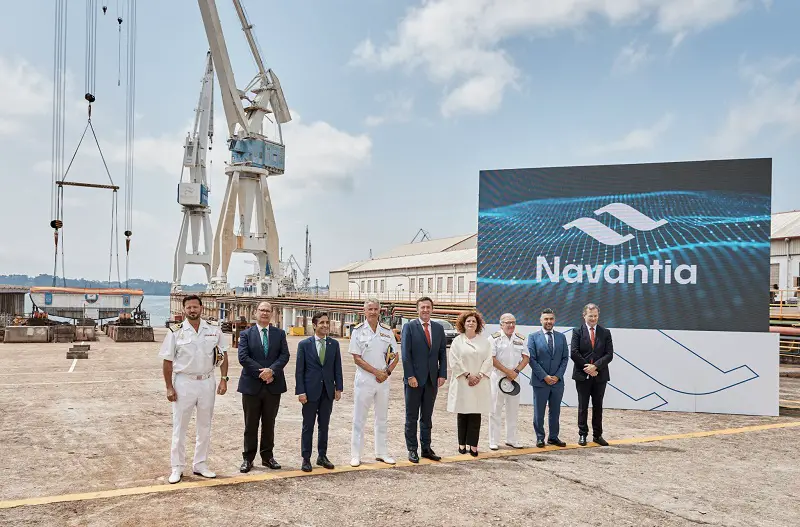On August 9, the Navantia shipyard in Ferrol (A Coruña) witnessed the keel-laying ceremony of the F111 frigate. The construction of this vessel, the first of a series of five next-generation frigates destined for the Navy, began in April 2022. This milestone event was attended by the Chief of Naval Staff, Admiral Antonio Piñeiro, accompanied by Navantia’s president, Ricardo Domínguez, and the director of the Frigates and Intervention Ships business, Eduardo Dobarro. The ceremony involved placing block 311 on slipway 2 at the Ferrol facilities, which will serve as the foundation for the rest of the ship’s construction. With this significant step, Navantia continues its progress in building these five frigates. The launching of this vessel is scheduled for 2025, with delivery to the Navy anticipated in 2028. The subsequent ship deliveries will occur at a cadence of 12 months each, extending until 2032 when the Navy will receive the fifth unit.
The F110 program is currently in its construction phase, with production ahead of schedule. To date, 18 out of the 33 blocks that will form the new F111 have entered the manufacturing process. The detailed engineering 3D model is around 80% complete, and 99% of platform equipment for all the ships in the series has been acquired. Navantia has initiated an acceleration plan for the construction program, which began by optimizing production systems with a pilot block. This has resulted in the early keel-laying ceremony. The construction of the F112 will commence before the end of the year. Over a span of 10 years, the F110 program will support approximately 9,000 jobs, accounting for both direct and indirect employment, as well as employment generated through economic activities. Around 500 companies from across Spain are participating in this endeavor.

The F-110 program is crucial for the Navy, as it will replace the aging ‘Santa María’ class frigates and enhance the capabilities of our F-100 ships, forming the core for the development of the Fleet’s other capacities. This transition has been possible due to the excellent collaborative relationship between the Navy and Navantia, built over decades of joint work aimed at achieving excellence in shipbuilding,” says Admiral Piñeiro.
“The F110 is a transformative lever for our entire industrial and technological ecosystem. While the Ferrol shipyard is already a global reference in frigate construction, this program will position it at the forefront of technology and industry, with the upcoming establishment of the digital block factory and the Center of Excellence for Digital Twins,” says Navantia’s president, Ricardo Domínguez.
The F110 frigate program, for which the execution order was signed in 2019, entails the construction of five units valued at 4.325 billion euros. These versatile escort vessels possess anti-air, anti-surface, and anti-submarine capabilities, capable of combined operations with other units. The F110 represents a qualitative leap for the Navy’s capabilities and the industrial and technological potential of Navantia and its collaborative industry. The program incorporates the Digital Twin concept, an innovative idea that will make the Ferrol shipyard an international reference for frigate construction. The Digital Twin, developed in close cooperation with the Navy and the General Directorate of Armament and Material (DGAM) of the Ministry of Defense, is a virtual replica of the ship. Through the use of behavior models and technologies like Cloud Computing, Machine Learning, and the Internet of Things (IoT), it supports maintenance and operations even from thousands of miles away, via the deployed Digital Twin on land.














